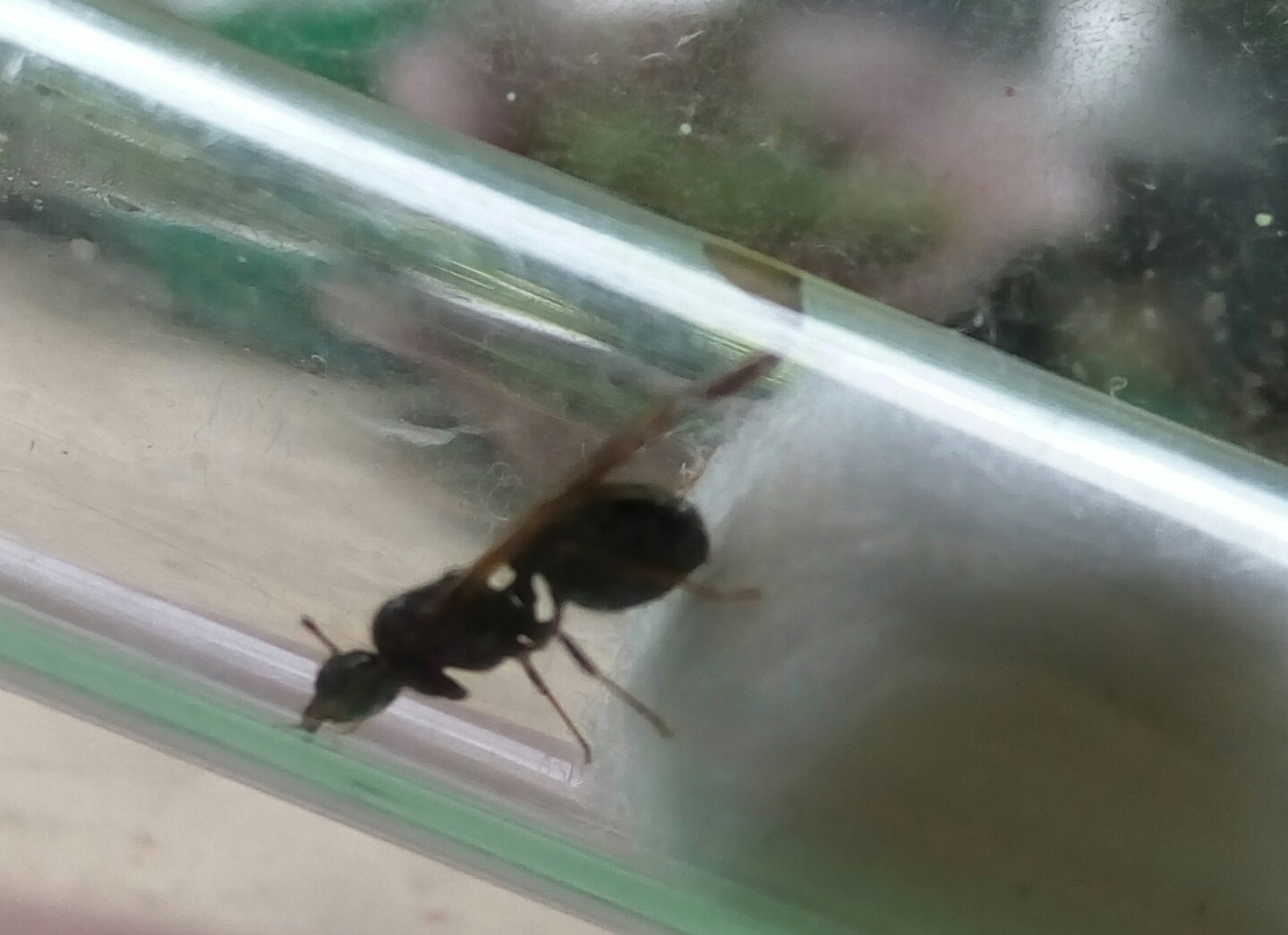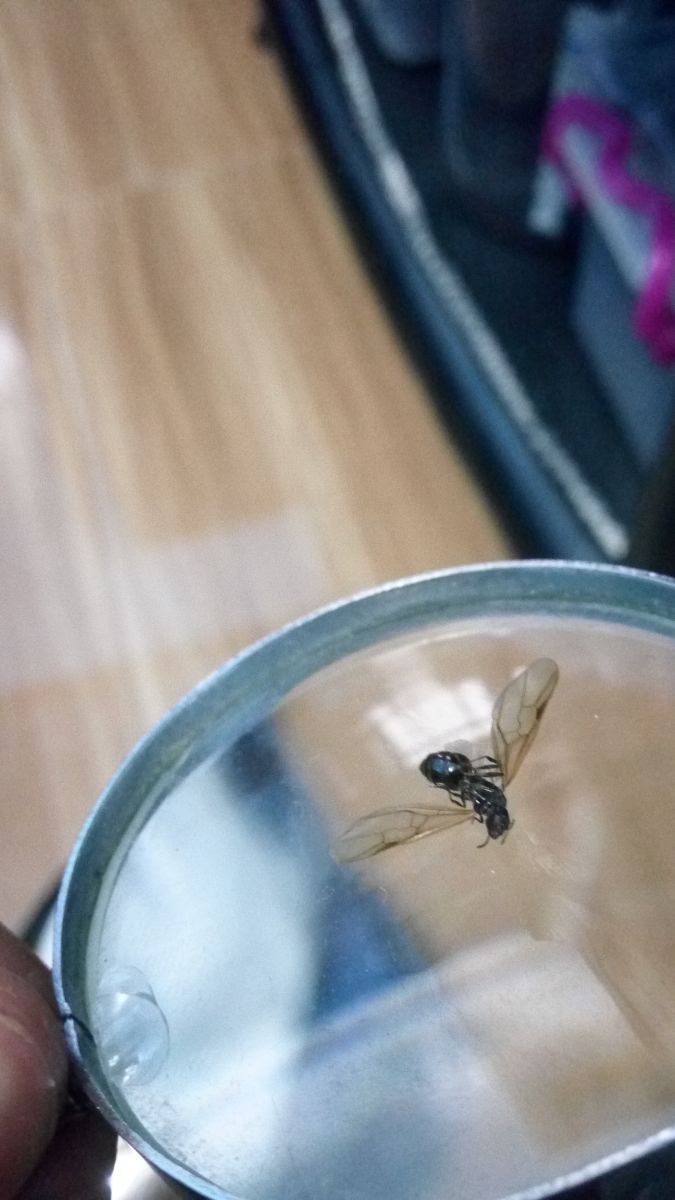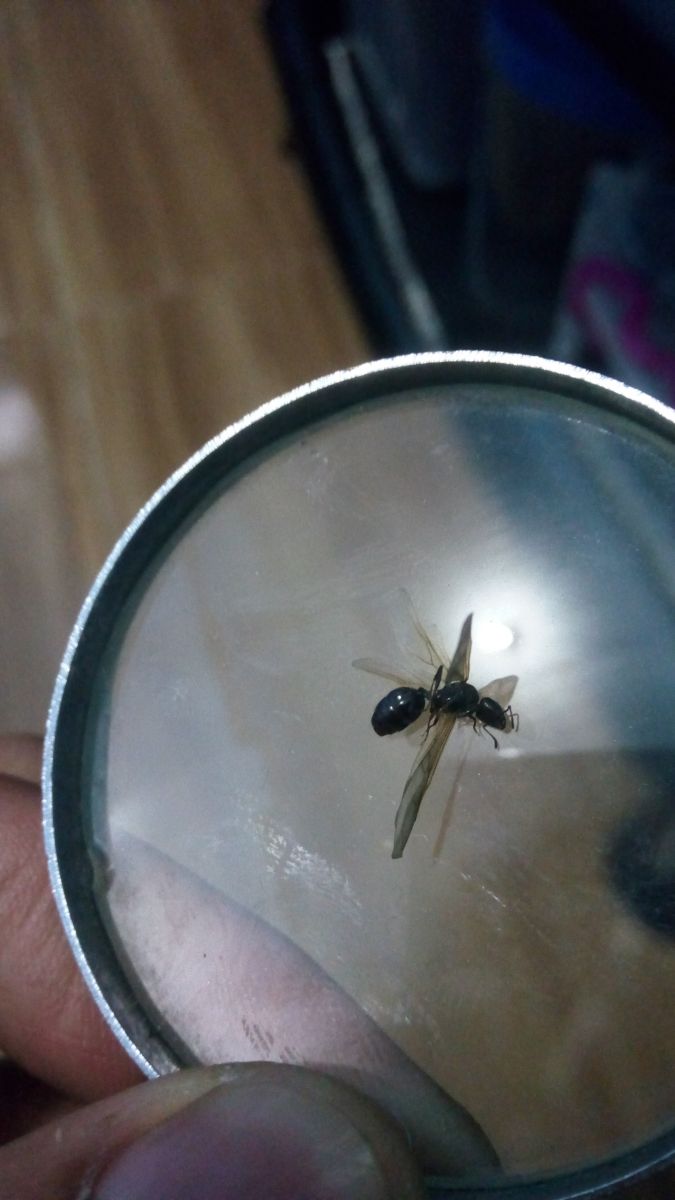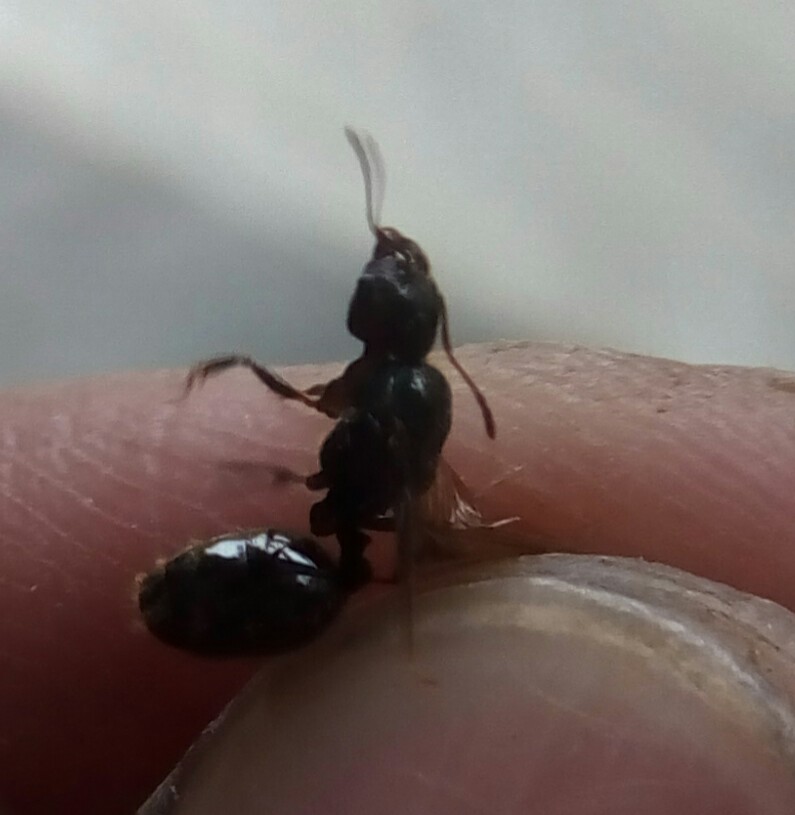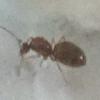1. Location of collection: Benguet, Philippines
2. Date of collection: July 7,2017
3. Habitat of collection: Dirt
4. Length (from head to gaster): 1cm
5. Color: Dark
6. Distinguishing characteristics: Antannae is short(2mm in length), Head measures 1mm horizontally, no stingers present
7. Distinguishing behavior: Workers become aggressive when colony is disturbed
8. Nest description: Nest was found on soil but not much complicated chambers its like the chambers was just naturally carved and not by the ants.
